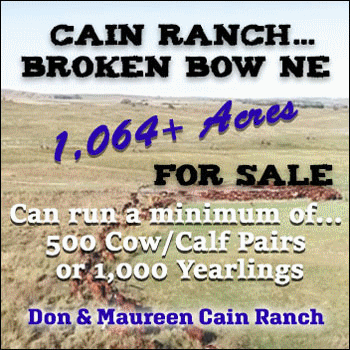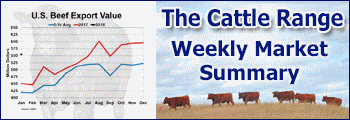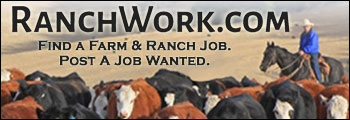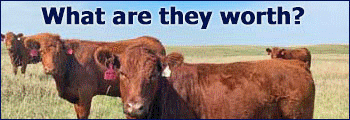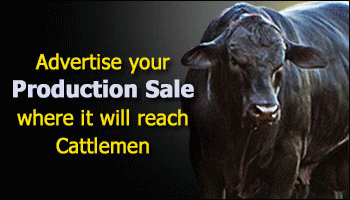Until and unless we update our tariffs and our tariff-rate quota system for cattle, beef, sheep, and lamb, then our domestic beef and lamb industries will continue to shrink.
Commentary by Bill Bullard, CEO, R-CALF USA
The U.S. has long had tariffs and tariff-rate quotas in both our cattle and beef and sheep and lamb industries. The only problem with these tariffs and tariff-rate quotas is that the tariffs are way too low to be effective.
Tariffs are a fee assigned to a product that is paid by the exporting nation to allow their product to enter our U.S. market. In the past, they’ve been important tools for maintaining our domestic beef and lamb production capacity by ensuring imports that are supported by foreign subsidies, both publicly known and clandestine; supported by currency misalignments; and even supported by largeness of scale advantages of foreign corporations, do not undercut domestic prices that cause our domestic production capacity to shrink.
Tariffs also provide revenue for our national treasury as the tariff, which helps offset whatever reason imported products are much cheaper than domestic products, represents a cash payment to our treasury.
Now tariff-rate quotas or TRQs are different in that their purpose is not to raise revenues. Instead, tariff-rate quotas set a volume limit per year on the volume of beef, for example, that a foreign country can export to the United States under low or even zero tariffs. But once the volume limit is reached, any additional imports are subject to a much higher tariff intended to curb additional imports during the year.
When set at adequate levels, tariff-rate quotas restrain enough imports to provide breathing space for domestic producers. They can provide greater market certainty enabling domestic producers to maintain profitable operations and invest in expansion. This itself will help reduce risks of shortages and prevent sudden price swings, again enabling domestic producers to remain profitable and invest in expansion.
The U.S. is the largest beef consuming market in the world, and yet our cattle industry is shrinking in terms of the number of producers, number of cattle, and number of marketing outlets, with imports capturing an ever-greater share of our domestic market. And while this is certainly true in our beef market, our lamb market is now largely captured by imports causing our domestic sheep industry to shrink at an alarming rate.
Why wouldn’t we want to deploy tried, proven, and already in effect economic tools to strengthen our nation’s food security by providing the breathing space for our domestic cattle and beef and sheep and lamb industries to remain profitable and expand?
But that’s certainly not what we’ve been doing for the past several decades. Instead, we’ve been dismantling our tariffs and tariff-rate quota systems to give certain countries unlimited access to our domestic market, creating a huge imbalance in the trade of cattle, beef, sheep and lamb.
There are no tariffs or tariff-rate quotas for Australia, Canada or Mexico and that’s a major reason for our nearly 1.6-billion-pound trade deficit in 2023.
But we do have a tariff-rate quota for New Zealand, which is set at 470.5 million pounds. So, if New Zealand sends us more beef than that, they have to pay the over-quota rate of 26.4%. Already through August of this year, New Zealand has shipped 436 million pounds, so they’re only about 34.5 million pounds from having to pay the over-quota rate, and they just might.
You see, many countries are undeterred by the over-quota tariff rate because it’s too low to be a meaningful check on imports. For example, Brazil is subject to a tariff-rate quota of about 143 million pounds that includes several other countries. But when that quota level is filled, then Brazil and the other countries have to pay the over-quota rate of 26.4%. But Brazil alone has far exceeded the volume-based quota of 143 million pounds as, through August, it has already shipped 496 million pounds to the United States.
So, it’s clear that the 26.4% over-quota beef tariff rate is ineffective at accomplishing the purpose of our tariff-rate quota system for beef, which is to provide our domestic industry with the opportunity to breathe, to remain profitable, and to invest in expansion.
Until and unless we update our tariffs and our tariff-rate quota system for cattle, beef, sheep, and lamb, then our domestic beef and lamb industries will continue to shrink, threatening our nation’s food security and worsening the ongoing hollowing out of rural communities across America.
So, pick up your phones and call your Senators and Representatives and urge them to establish meaningful beef, cattle, sheep, and lamb tariffs for all countries that we import from and to significantly increase our over-quota tariff rate of 26.4% so it can serve its purpose of deterring unlimited, price-depressing imports.
Source: R-CALF USA


